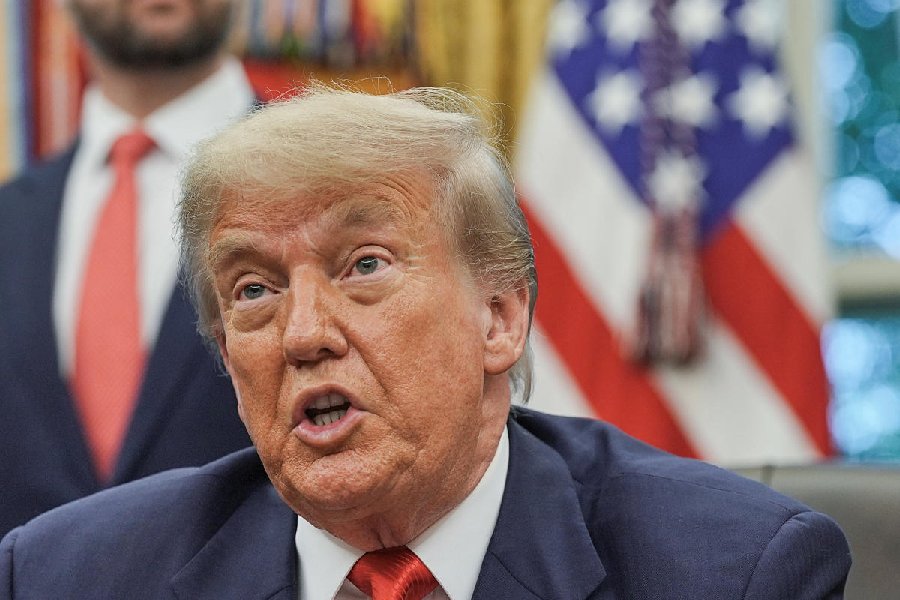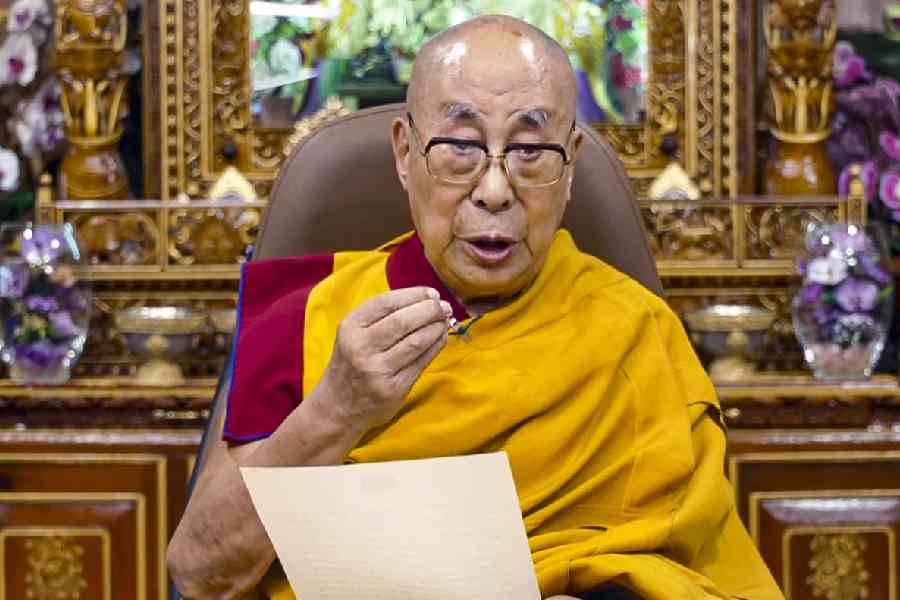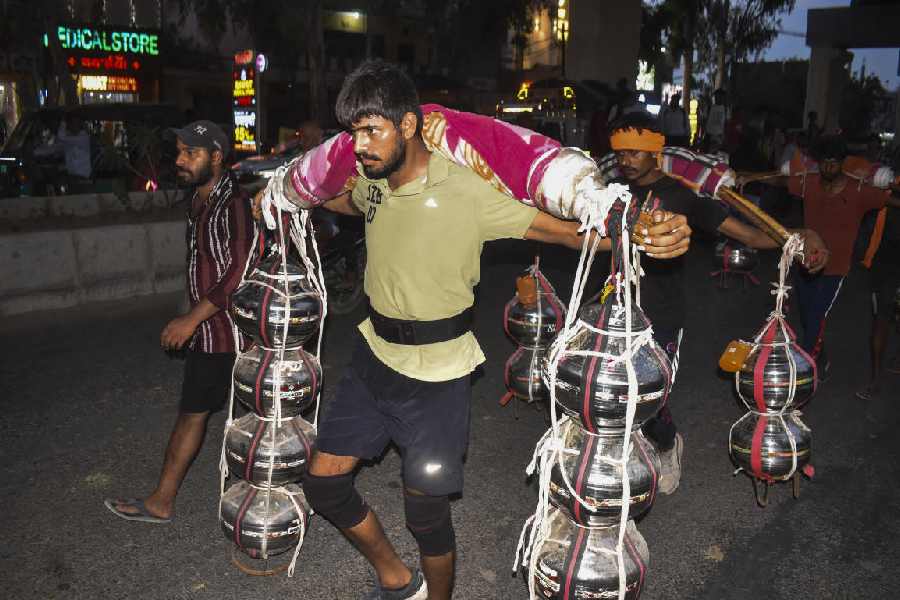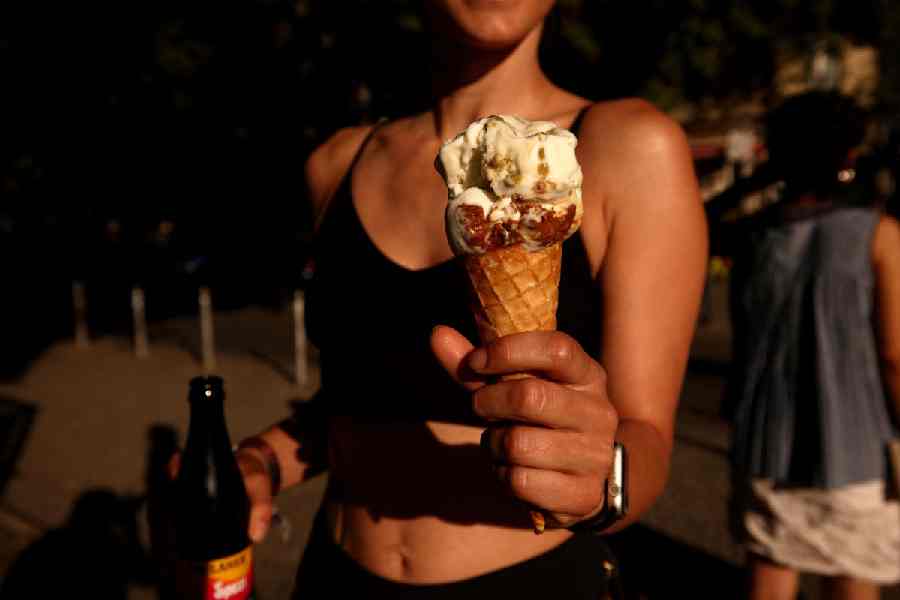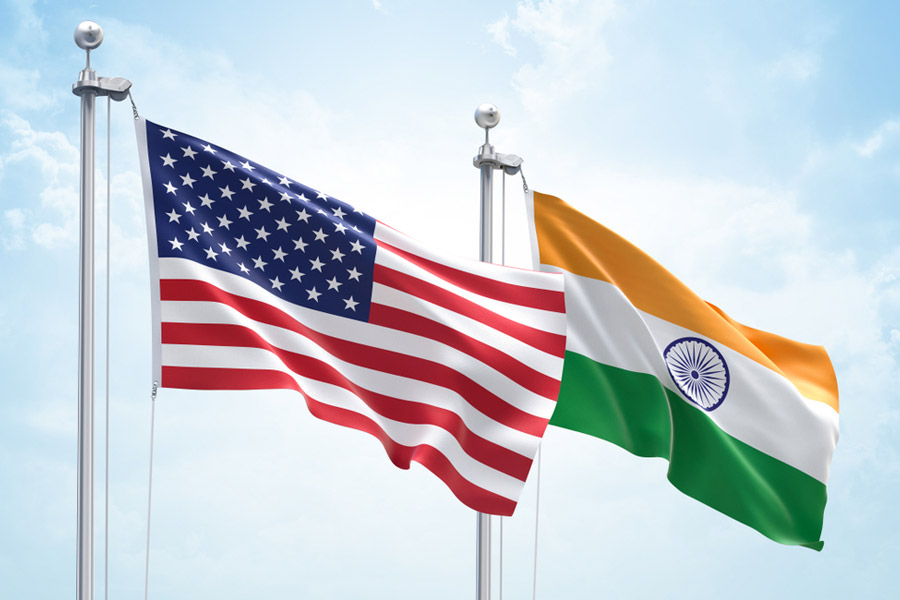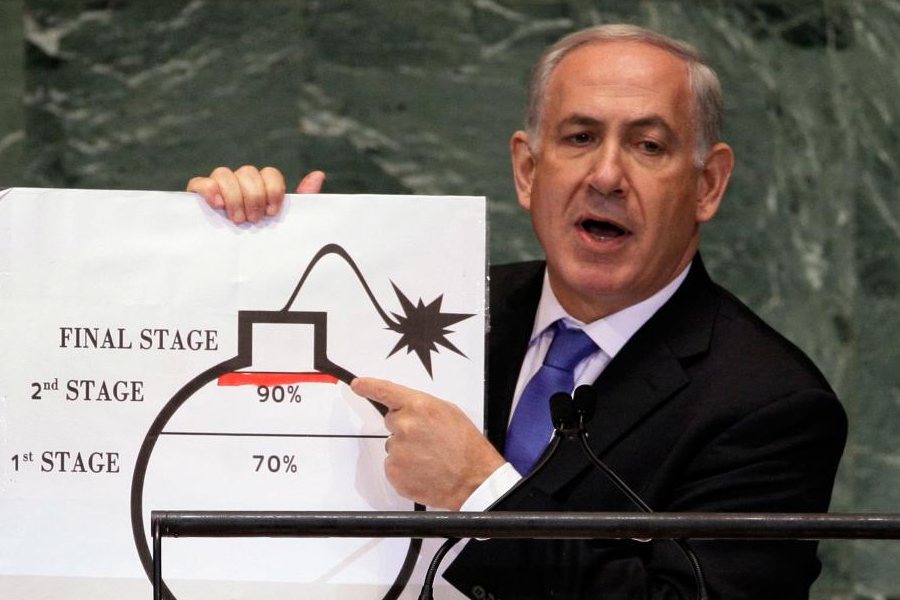 |
| Hello Ma’am: The Queen and Shilpa shake hands. (AFP) |
London, March 13: For a woman who has scarcely put a foot wrong since she emerged on the British scene, Shilpa Shetty did something yesterday that could become a talking point among some Indians, to put it mildly — she dropped a “deep curtsy” when she met the Queen.
“An Indian woman in a sari should never curtsy — a nod and a namaste are enough,” said a senior Indian diplomat, stipulating the rules of engagement carefully worked out over decades in meetings between the Indian High Commission and Buckingham Palace officials.
To be fair, the 31-year-old Bollywood actress was not wearing a sari when she was formally presented to the Queen during the celebration of Commonwealth Day at Westminster Abbey but a purple velvet intricately embroidered sherwani made by Tarun Tahiliani.
This did not temper the diplomat’s irritation: “An Indian woman has no business curtsying.”
Curtsy, a variant of “courtesy”, is defined in the dictionary as “a woman’s or a girl’s formal greeting or salutation made by bending the knees and lowering the body”.
While it is the common form of greeting when one of her subjects meets the Queen, especially one as popular as Elizabeth II after her screen depiction by the Oscar-winning Helen Mirren, the bending of the knees by an Indian to a British royal is bound to have historical significance.
Shilpa probably did not know any better or had been coached either by her PR advisers or palace officials.
One diplomat’s wife recalled that just before a meeting with the Queen, she was told by palace protocol: “You can curtsy to Her Majesty if you want to.”
Her reply was succinct: “I don’t want to.”
She didn’t. The namaste and the gentle nod were deemed adequate and the Queen herself, who does not seek obeisance (“a bow, curtsy, or other respectful or submissive gesture”), was “perfectly okay and charming about it”, a witness said.
Another senior Indian diplomat had it in for Shilpa. “Indian women are not supposed to curtsy when meeting members of the royal family. Shilpa must have been given the wrong advice.”
Kusoom Vadgama, an Indian historian who has written two books on the links between Britain and India, was less harsh and adopted a pragmatic, even sympathetic, line.
“I don’t mind too much because the Queen has been very nice (to India) on lots of occasions,” argued Vadgama. “But I would have minded if she had curtsied to, say, Camilla.”
Vadgama explained: “I have just spoken to the wife of a former Indian High Commissioner who confirmed that when she met the Queen, she inclined her head a little and did a ‘namaste’. This is what Indian protocol requires. But since the royal family are considerate and cover up when they go to Saudi Arabia, I would personally not make too much of fuss about Shilpa’s curtsy. I did meet the Queen once and I bowed my head a little but others in the group, who were either West Indians or English women, did curtsy.”
Vadgama noted: “At the height of empire when maharanis met royals, they kissed, because socially they were equals.”
Although largely ignored by the Indian High Commission, the winner of Celebrity Big Brother is now viewed by British public as the beautiful face of India. Her curtsy will go down well with the Brits.
Indeed, Shilpa was one of five people who were asked to give their personal testimonies yesterday on the theme of tolerance.
Speaking from an ornate pulpit embellished with gold decorations, Shilpa said in her speech: “As a child growing up in Bombay, I was aware of the vastness of India and of its incredible diversity. The differences are multiple in religion, culture, language, caste, wealth and much else. There are tensions between tradition and modernity, between the affluent and underprivileged. And there are new challenges such as the impact of HIV-AIDS, one of India’s fastest growing problems. And yet Indians share a common identity that unifies us and makes us a nation.”
She told a multi-faith congregation of 2,000: “In India, in the UK, and the world over we are constantly reminded that we have to cope with difference on a daily basis. It is every human being’s inalienable right to live with dignity. Differences must be overcome. Only then will we have a brighter future.”
It was certainly a big day for the star of the forthcoming Metro as she met the Queen by the Abbey’s Great West Door after her speech. She greeted the Queen with “Ma’am” and performed a deep curtsy as she shook her hand. She was rewarded with a broad smile.
The Duke of Edinburgh prompted Shilpa to laugh as she attempted to keep her balance while wearing open toe sandals with large wooden heels as she stood on a metal grate.
She recalled: “I nearly slipped. He said: ‘Look, be careful with your heels.’ The Queen just had a beautiful smile.”
Later, at a reception hosted by the Royal Commonwealth Society, it was Shilpa’s turn to be greeted by fans wanting autographs and photographs with her.
Shilpa told them: “It was the most memorable day of my life.”
Earlier, the Queen, as head of the Commonwealth, called for diversity to be regarded as a source for celebration rather than conflict: “Let us, like the Commonwealth, find our diversity a cause for celebration and a source for strength and unity.”
Back in Mumbai, they may still not take Shilpa all that seriously but today’s Daily Mail carries a picture of Shilpa and the Queen, with the headline: “The Queen of Bollywood meets the Queen.”
The report began: “Three months ago, most of us had never heard of Shilpa Shetty. But one series of Celebrity Big Brother later and even the Queen knows who she is.”
The Mirror picture caption states, tongue in cheek: “It’s hard to know who is more delighted with this meeting... Shilpa Shetty or the Queen.”


